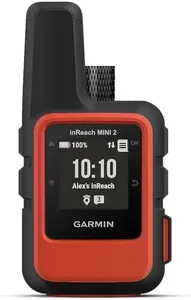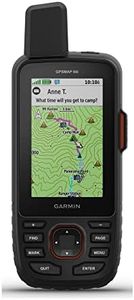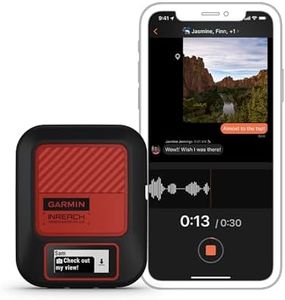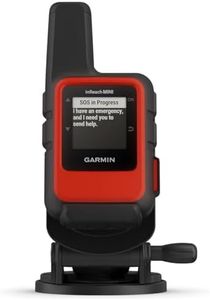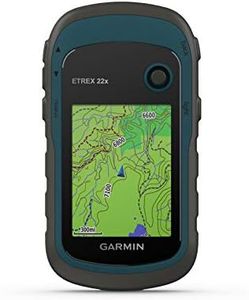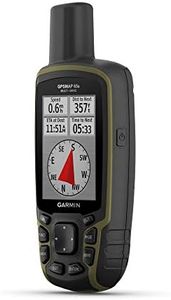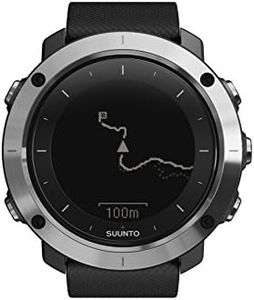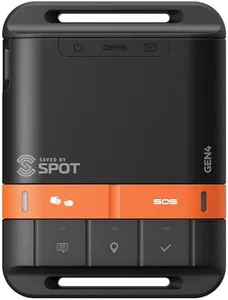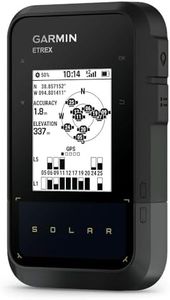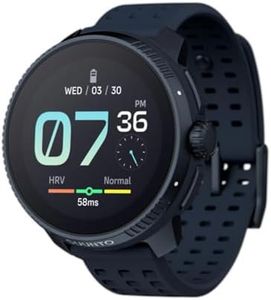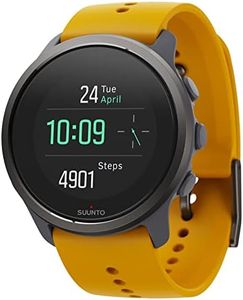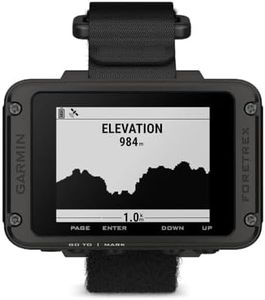We Use CookiesWe use cookies to enhance the security, performance,
functionality and for analytical and promotional activities. By continuing to browse this site you
are agreeing to our privacy policy
10 Best Backpacking Gps
From leading brands and best sellers available on the web.Buying Guide for the Best Backpacking Gps
Picking the right backpacking GPS can really improve your outdoor experiences by making navigation easier, increasing your safety, and enhancing your confidence when you’re off the beaten track. The best GPS for you depends on your style of travel, how much information you want at your fingertips, and how you plan to use it—whether for casual day hikes, multi-day treks, or remote expeditions. Focus on understanding which features will really benefit your trips rather than just looking for the most packed or complex device.Satellite ConnectivitySatellite connectivity in a backpacking GPS refers to which global navigation satellite systems the device can access, like GPS, GLONASS, or Galileo. This matters because connecting to more systems often gives you better accuracy and reliability, especially in challenging areas like deep woods or narrow canyons. Basic devices may only use the US GPS system, while mid-range and advanced models access several networks. If you often hike in places with tricky terrain or tree cover, look for multi-network connectivity, but if you mostly walk in open areas, standard GPS coverage should be enough.
Battery LifeBattery life tells you how long the GPS will run on a single charge or set of batteries. It’s important, especially on longer trips where you may not have easy access to power. Devices range from short-life models needing daily recharges to long-lasting units that can work for several days or even weeks. If you do overnights and remote trips, longer battery life or the ability to use replaceable batteries is valuable, while for short day hikes, you can choose shorter battery life and possibly a lighter device.
Display Type and SizeThe display type and size affect how easy it is to see maps, read data, and operate the device outdoors. Larger screens are easier to read and offer more detail but usually add weight and use more power. Some displays are touchscreens, while others use buttons, which can be easier to handle with gloves in cold weather. If you want detailed maps and easy navigation, consider a larger or color screen, but if you want to save weight or battery, a smaller or monochrome display may suit you better.
Mapping and StorageMapping refers to the detail and type of maps your GPS can use and how much memory (storage) it has. Some devices come with basic maps, while others include detailed topographic, hiking, or worldwide maps, and may allow you to add your own. More storage means you can keep more maps or longer tracks. If you plan to travel across different regions, customizable maps and larger storage are helpful, but for those who stick to one area, basic or preloaded maps may be enough.
Water and Weather ResistanceWater and weather resistance describe how well the device can handle rain, splashes, and rough conditions. This is rated by standards such as IPX, with higher numbers offering stronger protection. If you expect to face wet climates or accidental drops in streams, make sure the GPS is rated to survive your typical conditions. Dry, mild weather hikers can be more flexible here.
Weight and SizeWeight and size will impact how easy it is to carry your device on the trail. Lighter and smaller GPS units are more comfortable for long hikes and ultralight trips but may lack some features or have smaller displays. Larger units can offer better screens and functions but may weigh you down. Choose based on your comfort carrying gear—if every ounce matters, go small; if you want features and don’t mind the weight, a bigger unit may be worth it.
User Interface and Ease of UseHow easy it is to operate your GPS, especially when tired or in bad weather, is very important. Some units have simple menus and clear buttons, while others rely on touchscreens or more complex systems. If you prefer quick, straightforward use or expect to use gloves, choose a simple, button-based interface. If you enjoy exploring maps in detail and have patience for a learning curve, a more advanced layout could work.
Additional Features (Compass, Barometer, Messaging)Many GPS devices now include extras like built-in compasses, barometric altimeters for more accurate elevation, and sometimes two-way messaging or SOS functions. A compass helps with basic navigation when standing still, a barometer is helpful in mountainous terrain, and messaging gives peace of mind if you might need help. Think about which add-ons you’ll actually use—life-saving features are great for remote hikes, but simple navigation might be enough for casual users.
